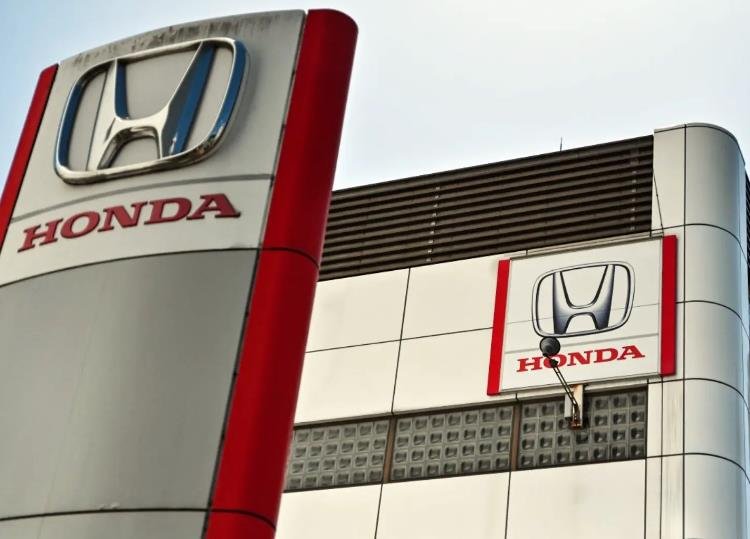Japanese automaker Honda Motor Co. reported a significant decline in profits for the first half of the fiscal year, attributing the downturn to reduced sales in China and increased operational costs.
Honda Motor Co.’s profits for the April-September period totaled 494.68 billion yen ($3.2 billion), marking a nearly 20% decrease from the 616 billion yen recorded during the same period last year. This decline occurred despite a rise in overall sales revenue, which increased to 10.8 trillion yen ($70.5 billion) from 9.6 trillion yen the previous year.
- First Half Profit (Apr-Sep 2024): 494.68 billion yen ($3.2 billion)
- First Half Profit (Apr-Sep 2023): 616 billion yen
- Sales Revenue (Apr-Sep 2024): 10.8 trillion yen ($70.5 billion)
- Sales Revenue (Apr-Sep 2023): 9.6 trillion yen
Impact of Declining China Sales
A primary factor behind the profit decline was a significant drop in car sales in China, Honda’s largest international market. While Honda saw a boost in motorcycle sales globally, driven by strong demand in various Asian markets, the automotive division struggled to maintain its previous sales volumes in China.

Factors Contributing to Declining Sales:
- Market Saturation: Increased competition in the Chinese automotive market.
- Economic Slowdown: Slower economic growth impacting consumer purchasing power.
- Regulatory Changes: Stricter emissions and safety regulations affecting vehicle offerings.
Increased Operational Costs
In addition to declining sales, Honda faced rising operational costs that further eroded its profitability. The company cited higher warranty costs, expenses related to quality problems, and increased incentives as significant contributors to the profit decline. Moreover, fluctuations in foreign exchange rates added additional pressure on Honda’s financial performance.
Cost Drivers:
- Warranty Costs: Increased expenses from vehicle repairs and replacements.
- Quality Issues: Costs associated with addressing manufacturing and design defects.
- Incentives: Higher promotional and sales incentives to boost vehicle sales.
- Foreign Exchange Fluctuations: Adverse currency movements impacting international revenue.
Revised Profit Forecast
In light of the lower-than-expected profits, Honda has adjusted its full fiscal year profit forecast. The company now anticipates a profit of 950 billion yen ($6.2 billion) through March, down from the previous forecast of 1.1 trillion yen ($7.2 billion) for the fiscal year.
Forecast Adjustment:
- Previous Forecast: 1.1 trillion yen ($7.2 billion)
- Revised Forecast: 950 billion yen ($6.2 billion)
Strategic Response and Future Outlook
Honda has pledged to address the challenges it faces by investing more in human resources and exploring growth areas. The company is adopting a “multi-pathway” strategy, focusing on hybrids, fuel cells, and electric vehicles to align with evolving market preferences and regulatory requirements.
Strategic Initiatives:
- Investment in Human Resources: Enhancing workforce capabilities and expanding training programs.
- Focus on Sustainable Technologies: Accelerating development and deployment of hybrid and electric vehicle models.
- Quality Improvement Programs: Implementing stricter quality control measures to reduce warranty costs and address quality issues.
- Market Diversification: Exploring new markets and strengthening presence in existing ones outside China.
Honda expects vehicle production to recover in the second half of the fiscal year as it addresses certification issues and reexamines its manufacturing processes to prevent future quality problems.
Table: Comparative Financial Performance
| Metric | April-Sep 2024 | April-Sep 2023 |
|---|---|---|
| Profit (Yen) | 494.68 billion | 616 billion |
| Sales Revenue (Yen) | 10.8 trillion | 9.6 trillion |
| Global Vehicle Sales | 2.3 million | 2.4 million |
| Full Fiscal Year Forecast | 950 billion | 1.1 trillion |
Challenges and Considerations
Despite the optimistic outlook for the latter half of the fiscal year, Honda faces several challenges that could impact its recovery trajectory:
- High Dealer Inventories: Excess inventory may lead to continued discounting and reduced profit margins.
- Economic Uncertainties: Ongoing economic fluctuations could affect consumer spending and vehicle demand.
- Competitive Pressure: Intense competition from both established and emerging automakers in key markets.
Honda Motor Co.’s recent profit decline underscores the complexities of operating in a highly competitive and rapidly changing global automotive market. While the company has faced significant challenges in its largest market, China, its strategic initiatives aimed at enhancing quality, investing in sustainable technologies, and diversifying its market presence position Honda for a potential recovery in the second half of the fiscal year. Addressing operational inefficiencies and adapting to market demands will be crucial for Honda to regain its profitability and sustain long-term growth.
















